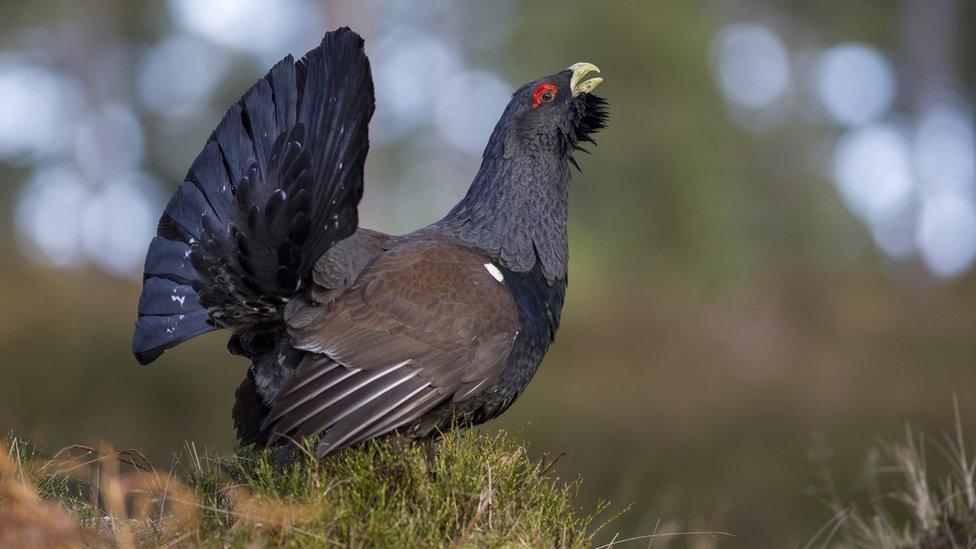Capercaillie one of Scotland's most endangered birds
- Published

Wildlife experts are working to look after these special birds
Conservationists - people who protect wildlife - are asking people in Scotland to help to protect the capercaillie.
The large birds, found in Scottish forests, are now critically endangered.
Experts in Scotland say there are only around 540 of the birds left in the country.
The population has dropped by around 50% since the last survey, six years ago.
What is a capercaillie?
The male capercaillie has very bright features next to its black feathers
A capercaillie is a large grouse bird - they look a bit like chickens!
They spend most of their time on the floor of forests and woodland, looking for food.
In the UK they like to live in Scottish native pinewoods, and you can find them in the Cairngorms - a huge national park full of mountains and forests in Scotland.
The male and female capercaillie look very different from each other. The male is large and has black feathers, and the female is smaller, with brown feathers.
The male and female capercaillies are very different sizes!
Why are they endangered?
Experts say it is because of the cold, wet spring weather that's happened over the past few years.
The female capercaillie needs to be strong and healthy when she has chicks - but the cold weather has made this difficult.
As well as liking the forest floor, some capercaillies also like to eat shoots from trees
The Royal Society for the Protection of Birds (RSPB) - which looks after birds in the UK - says it's also due to the habitat that they like to live in. It says Scottish native pinewoods are rare and vulnerable.
The RSPB also says capercaillies could become extinct - which would mean there would be none left at all.
What can be done about it?
NatureScot is a group that protects wildlife in Scotland.
It wants to put more money into the capercaillie conservation project - which works across the Cairngorms National Park in Scotland where most of the Scottish capercaillies are.
The Cairngorms in Scotland have huge forests - but they need looking after!
By protecting the land that the birds live in, it's hoped capercaillies will be able to breed and have a safe environment to live in.
The conservation project regularly checks the numbers of capercaillies in each area, so they know where to focus on.
Conservationists can work with private land owners to make sure they are looking after their local forests well enough.
They also let people know in Scotland that the local capercaillie population is going down, so they could also get involved and help out.
As well as looking after the birds and tracking their numbers, NatureScot also wants to make sure the pinewood forests that the capercaillies like to live in are safe.
They say that this can be done by planting trees, conserving plants, and making sure the birds are able to get the right amount of food.
- Published29 September 2022
- Published29 September 2022
